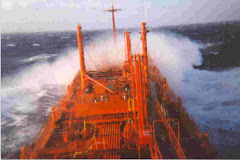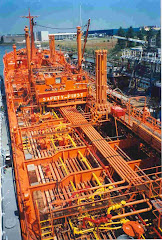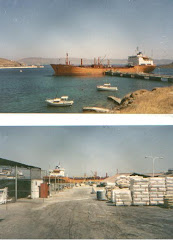The Ceva merger is a milestone for CMA-CGT. It represents an effort to move away from a transport provider business model to a logistics operation, in hopes of creating more value content to services sold and better earnings margins for shareholders
The liner industry has been through years of stress. This is related to many years ofovercapacity and intense competition sending box rates to very low levels, despite China entering the WTO and a global trade boom with a massive rise in volume of container traffic on head haul routes to Europe and the US for finished goods.
The liner industry has basically exhausted any possible way of improving profit margins within its present business model as transport provider to freight forwarders.
- Initially there was an attempt to move to large tonnage to defend earnings margins by lower unit costs. The industry moved to Panamax size to post-Panamax for the huge 10.000 teu plus vessels that are employed on head haul routes today. Whilst this process created a cascading of the small older tonnage to other routes. Every liner company was obliged to follow suit to remain competitive in the alliance system. Financially weaker operators resorted to chartering larger units from vessel provide companies, who could carry them on their balance sheet against the period charters. None of this provided any sustained relief with improved box rates and better earnings margins. The larger units and cascading generated more overcapacity in the process.
- The Global Financial crisis in 2008 created substantial trade disruption that put all the major liner companies in massive losses. |Defensively the major liner companies resorted to slow steaming for lower fuel costs and soak up as much tonnage overcapacity as possible. This mitigated the operating losses and provided some reprieve. Eventually slower speeds became a norm in the liner industry.
- It did not prove to be any game changer, however. Eventually two major Korean lines - Hyundai and Hanjin - had serious financial problems leading to debt restructuring and the bankruptcy of Hanjin. The Hanjin bankruptcy helped rebalance the industry. There was a revision of the alliance system to three major alliances. For a brief period there was some improvement in box rates with this industry consolidation.
- IMO2020 and higher fuel costs is a tremendous challenge to the liner industry. The liner industry has been the most proactive shipping segment to deal with these challenges. All the options are painful. Using compliant low sulphur fuel requires securing in advance necessary fuel supply to support continuation of liner service without disruption. Fitting scrubbers on larger container vessels is an expensive CAPEX investment and means the immobilization of the significant number of vessels for refitting. Use of LNG requires new building orders for another generation of container vessels.
Last year there was a partial recovery for some of the liner companies, but others remained with operating losses.
After the 2008 GFC, CMA-GGT nearly went into bankruptcy. They were compelled to take on a Turkish partner for fresh capital. Only recently last year did CMA-CGT start to generate again operating profits. This despite a merger with APL and moving operations to Singapore.;
The CEVA acquisition is an major attempt to revise their business model. But CMA-CGT remains with a weak balance sheet and the merger execution is a major financial challenge for them. They are looking to divest of their terminal business to raise cash to complete this merger. CMA-CGT has also ordered a new generation of LNG powered containerships.
CMA CGM is saddled with US$ 20 bio debt and serious liquidity issues. They must get a grip on their debt and improve liquidity in 2020 or CMA CTGT may have to restructure its balance sheet,
CMA CGM is saddled with US$ 20 bio debt and serious liquidity issues. They must get a grip on their debt and improve liquidity in 2020 or CMA CTGT may have to restructure its balance sheet,
Meanwhile the liner industry faces further challenges. The Chinese economy is maturing and China is moving to slower GDP growth. Trade patterns are changing. Trade is becoming more regional. Production is moving closer to consumption areas.
The general containership outlook remains bleak. Box rates are likely to remain low. Older vessels may be subject to extraordinary value depreciation. We have seen this before with container vessels even younger than 20 years going to scrap.
The only bright side is improved supply-demand balance in interregional trade and better time charter rates for old Panamax vessels and smaller containerships.









No comments:
Post a Comment